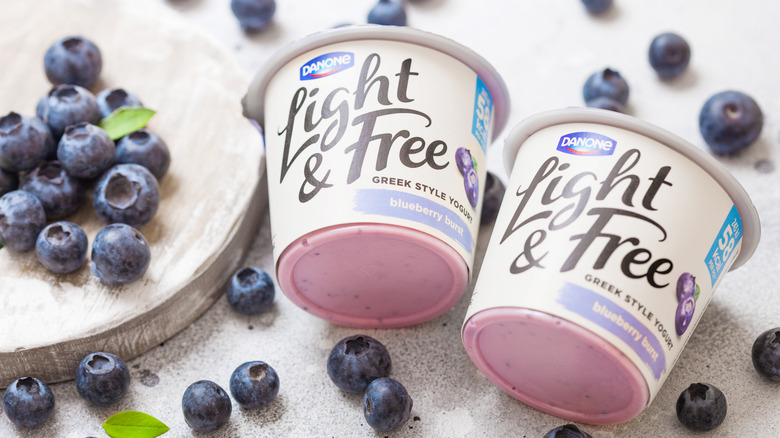The Health Food Label That's Actually A Big Red Flag
Food labels can be tricky things to decipher. While perusing through the grocery store aisles in search of healthy meal options, it can be easy to reach for food packaging that has tempting buzzwords like "sugar-free" and "organic" in bright, bold letters on the front of the label. While it is true that the Food and Drug Administration must regulate all health food claims, there can be confusing gray areas. For instance, in this list of "potentially meaningless or misleading" label lingo, the word "natural" is not regulated, meaning any company can use it to market and promote its grub.
Sometimes, the FDA is a bit late to the party with updating their food requirements and regulations, as can be seen in their 2022 proposal to "update the 'healthy' claim for food labeling to be consistent with current nutrition science and federal dietary guidance," (via U.S. Food & Drug Administration). The usage of the word "healthy" on food packaging hadn't been updated since 1994. A lot has changed in the nutritional world in those 30 years, so it makes one wonder what other decades-old regulations on current labels need an overhaul so that buyers might feel more confident with their purchases.
There is one particular buzzword you've likely seen plastered on all kinds of food products — "light". Avoid misreading food labels with this word by double-checking the nutrition facts before buying to see if any other additives managed to sneak their way into your food.
Light foods often compensate in other ways
Refrigerated aisles of stores are lined with stacks of light yogurt, light cream cheese, and light margarine staring back at you. What exactly are light foods and how does this term differ from using the word "low"? These terms can be used for calories, fat content, and sodium levels. According to Forkly, the FDA allows items to be labeled as low-calorie when it has "at least 40 fewer calories (for a snack) and 120 fewer calories (for an entrée) than its original version." Foods that are labeled as "light" can only claim this buzzword if the fat or sodium levels present are 50% reduced when compared to the original. Knowing this, you should still be cautious with these kinds of food labels because many products make up for what's been removed with higher amounts of sodium or sugar (via Beaufort Memorial).
In a perfect world, we could quickly look at food packaging and not feel misled, not a care in the world about having to check the nutrition label for accuracy's sake. However, there are lots of helpful hints you can pick up on when breaking down what's really in the food you're consuming. For example, sugar is one of the sneakiest ingredients of them all, and manufacturers often label hidden sugar content by using complex words ending in "-ose." Staying as informed as possible about food label gimmicks and FDA terminology can help you make more health-conscious choices when you embark on your next Costco bulk run.

